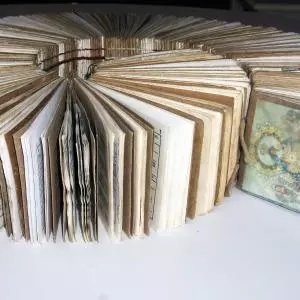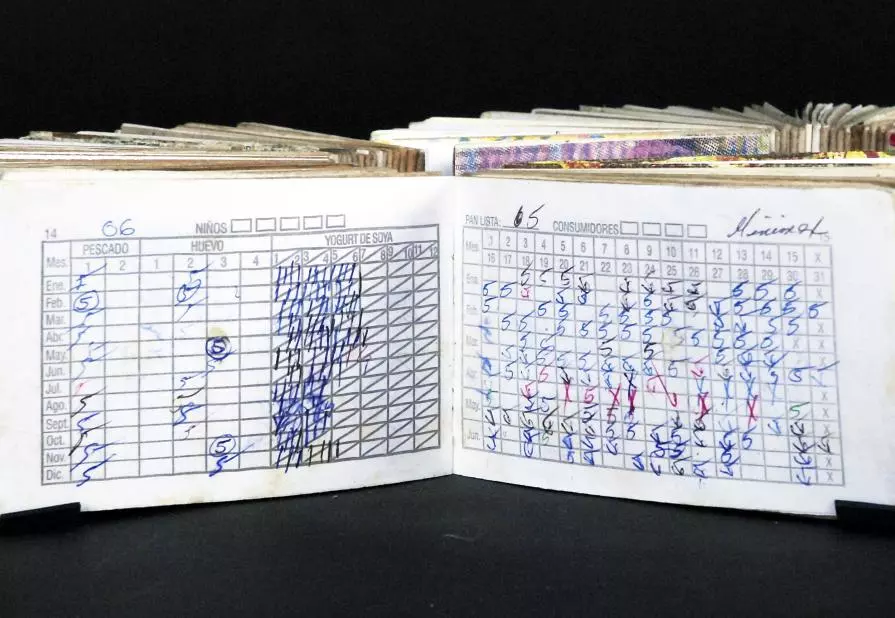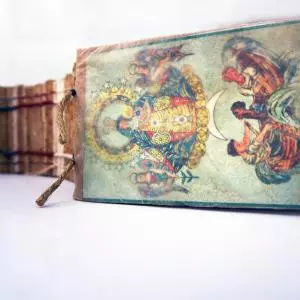
Cincuenta mas años- collaboration with Cuban Families, 2015- 2017

Cincuenta mas años- collaboration with Cuban Families 2015- 2017 200 Cuban ration books, Open edition. Earlier editions created in 2010, 2014 and 2015 each contained one libreta for each year of the Revolution. The essay is by the Cuban ethnographer Abel Sierra Madero, Ph.D This book of Libretas was donated to Colección Arte de Nuestra América, Haydee Santamaria, Casa de las Americas, Havana Cuba. Imagine a stranger asking for your ID, your address, names and birthdates of all the members of your family and a list of the food allotted to you by the local food bank. The libreta supplies the basic food to support a Cuban individual for 12 days a month over 1 year. Everyone uses the libreta and for 20 percent of Cubans this state support is a necessity When I compared the libretas to my parent’s ration books used during WWII. The response I received was-"Yes, every foreigner relates these ration books to wartime". On presenting the bound book of libretas to Cubans, the reaction was mixed -awe, pride, sadness or a quiet shaking of the head. On seeing them bound together one curator stood up and pushed herself away from the table, refusing to look - too many libretas, too much history. Ten percent of the sale of each book helps purchase book arts and printmaking supplies for the gratis workshops run by Red Trillium Press.
Cincuenta y seis- A collaboration with Cuban Families
Ration books, 5.25 x 3.25 x 6.25 inches. Open edition. Two created in 2010, two in 2014 and four books in 2015. Essay by the Cuban ethnographer Abel Sierra helps explain the complexity of the libreta in Cuban society.
These libretas are the strongest collaboration- book I've done to date. Imagine someone -a stranger asking for your ID, your address, names and birthdates of all the members of your family and a list of the food allotted to you by the local food bank. Everyone goes to the food bank- you have to. That is what I asked of my friends.
When I compared the libretas to my parent’s ration books used during WWII. The response I received was-"Yes, Yes, every foreigner relates these ration books to wartime".
When I showed the libretas to Cubans before returning home the reaction was mixed -awe, pride, sadness or horror, sometimes a quiet shaking of the head. On seeing them bound together one curator pushed herself away from the table. Brushing her hands together side to side, she stood up and stepped even further away from them, refusing to look - too many libratas, too much history. Rice, beans and bread for 12-14 days a month for 1 year- if the rice or beans are available.
Abel Sierra’s essay helps explain the complexity of the libreta in Cuban society.
 Share / Save
Share / Save






















Comments 0
Say something